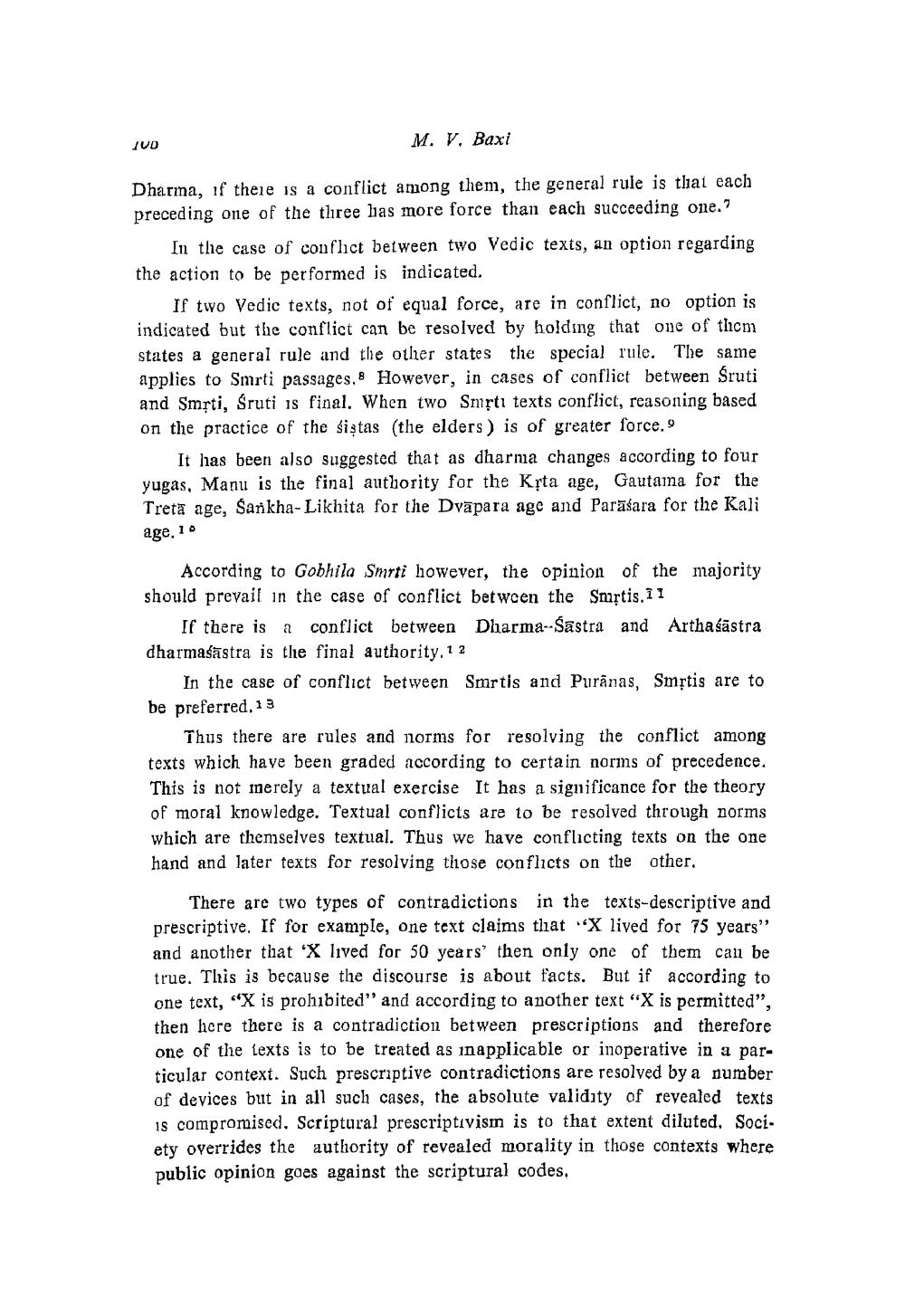________________
IVD
M. V. Baxi
Dharma, if there is a conflict among them, the general rule is that each preceding one of the three lias more force than each succeeding one."
In the case of conflict between two Vedic texts, an option regarding the action to be performed is indicated.
If two Vedic texts, not of equal force, are in conflict, no option is indicated but the conflict can be resolved by holding that one of them states a general rule and the other states the special rule. The same applies to Smrti passages. 8 However, in cases of conflict between Sruti and Smrti, Sruti is final. When two Smrti texts conflict, reasoning based on the practice of the sistas (the elders) is of greater force.9
It has been also suggested that as dharma changes according to four yugas, Manu is the final authority for the Kyta age, Gautama for the Treta age, Sankha-Likhita for the Dvāpara age and Parasara for the Kali
age. 10
According to Gobhila Smrti however, the opinion of the majority should prevail in the case of conflict between the Smrtis. 1 1
If there is a conflict between Dharma--Sastra and Arthaśāstra dharmaśāstra is the final authority. 1 2
In the case of conflict between Smrtis and Purānas, Smộtis are to be preferred. 13
Thus there are rules and norms for resolving the conflict among texts which have been graded according to certain norms of precedence. This is not merely a textual exercise It has a significance for the theory of moral knowledge. Textual conflicts are to be resolved through norms which are themselves textual. Thus we have conflicting texts on the one hand and later texts for resolving those conflicts on the other.
There are two types of contradictions in the texts-descriptive and prescriptive. If for example, one text claims tliat "X lived for 75 years" and another that 'X lived for 50 years' then only one of them can be true. This is because the discourse is about facts. But if according to one text, “X is prohibited" and according to another text "X is permitted", then here there is a contradiction between prescriptions and therefore one of the texts is to be treated as inapplicable or inoperative in a particular context. Such prescriptive contradictions are resolved by a number of devices but in all such cases, the absolute validity of revealed texts is compromised. Scriptural prescriptivism is to that extent diluted, Soci. ety overrides the authority of revealed morality in those contexts where public opinion goes against the scriptural codes,




